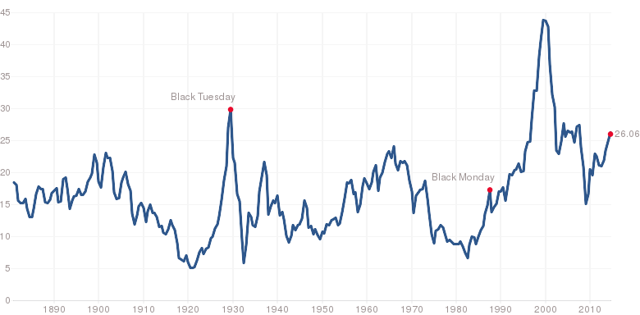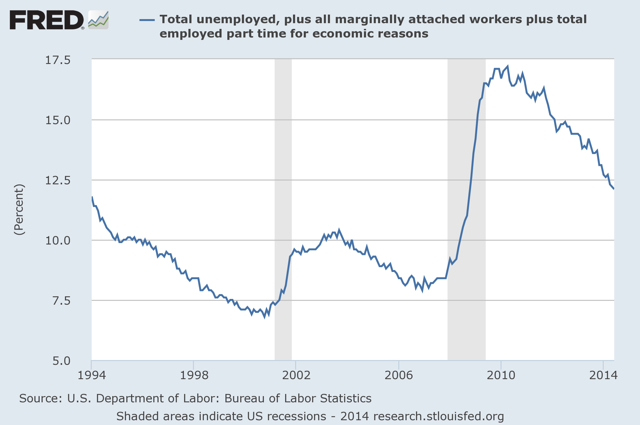This is one of the best written article on investments and I'm in total agreement with Shane Oliver. I often say that we are still in a sweet spot because interest rates are rock bottom in the west. But I expect greater volatility going forward. Upside for US, Europe and Japan equities will be < 15%.
Asia and EM equities will be sideways for a while this year before finally shooting forward.
Investment outlook after another solid financial year | Shane Oliver
In a recent economic commentary Dr Shane Oliver, Head of Investment Strategy and Chief Economist at AMP Capital says the past financial year saw another 12 months of strong returns.
Returns of around 20% from shares, solid returns from property assets and good returns from bonds saw balanced growth superannuation funds return around 13% on average.
This was the second year in a row of double digit gains. By contrast the return from cash was poor and average 12 month bank term deposits returned less than 4%.

Source: Thomson Reuters, AMP Capital
As always there has been plenty to fret about, including:
With shares no longer dirt cheap it’s likely returns will slow – indeed they have over the last six months. However, the cyclical bull market in shares likely has further to go.
This along with reasonable returns from property assets should underpin further gains in diversified investment portfolios over the year ahead.
 Source: Bloomberg, AMP Capital
Source: Bloomberg, AMP Capital
Cyclical bull markets in shares invariably see three phases. First an unwinding of cheap valuations helped by low interest rates. The second is driven by stronger profits.
And the third phase is a blow off as investor confidence becomes excessive pushing shares into expensive territory. Our assessment is that we are still in the second phase and as such the cyclical/profit backdrop remains critically important.
In fact the March quarter growth soft patch seen in the US, Europe and China was more positive than negative because it wasn’t threatening but further pushed out the timing of any monetary tightening.
By region:
 Source: Bloomberg, AMP Capital
Source: Bloomberg, AMP Capital
This suggests global growth is likely to pick up a notch which should underpin a modest improvement in profit growth.
In Australia, while the mining investment slowdown, the impact on confidence from the May Budget and the too high $A pose a short term threat, underlying growth is likely to have picked up to a 3% pace by year end and continue through next year helped by a housing construction boom, a Senate induced softening in some of the harsher aspects of the Budget and strength in resource export volumes.
In the US the mountain of money built up in bond funds during the post GFC “irrational exuberance for safety” has yet to really reverse.
 Source: ICI, AMP Capital
Source: ICI, AMP Capital
And in Australia, the amount of cash sitting in the superannuation system is still double average levels seen prior to the GFC and Australians continue to prefer bank deposits and paying down debt to shares and superannuation. There is still a lot of money that can come into equity markets as confidence improves.
 Source: Westpac/Melb Institute, AMP Capital
Source: Westpac/Melb Institute, AMP Capital
However, while investment returns are likely to slow, still reasonable share valuations, gradually improving economic conditions, easy monetary conditions and a lack of excessive optimism suggest further decent investment returns ahead.
Returns of around 20% from shares, solid returns from property assets and good returns from bonds saw balanced growth superannuation funds return around 13% on average.
This was the second year in a row of double digit gains. By contrast the return from cash was poor and average 12 month bank term deposits returned less than 4%.

Source: Thomson Reuters, AMP Capital
As always there has been plenty to fret about, including:
- The mid 2013 “taper tantrum” in the US, with investors fearing the Fed’s decision to start winding down its quantitative easing program would threaten the US economy and shares;
- The US Government shutdown and debt default worries in October and the March quarter economic contraction;
- The slow recovery and deflation worries in Europe;
- Fears of a sales tax hike driven recession in Japan;
- Another bout of hard landing worries regarding China centred on the property and shadow banking sectors;
- Worries about the impact on emerging countries of Fed tapering;
- Geopolitical worries regarding Syria, Ukraine and Iraq;
- Ongoing worries as to how Australia will fare as the mining boom fades and whether the May Budget will worsen the economic outlook; and
- The last six months has seen intensifying concerns that share markets are set for a fall.
- A continuing improvement in the global economy;
- The Fed’s tapering has clearly been contingent on improving growth with a rate hike still a fair way off;
- Further easing measures by the European Central Bank;
- Little global economic damage from geopolitical risks;
- Continuing record monetary stimulus in Japan;
- A stabilisation in Chinese economic growth helped by various mini-stimulus measures;
- No sign of capital flight from emerging countries and election optimism regarding India and Indonesia; and
- Okay growth in Australia helped by low interest rates.
With shares no longer dirt cheap it’s likely returns will slow – indeed they have over the last six months. However, the cyclical bull market in shares likely has further to go.
This along with reasonable returns from property assets should underpin further gains in diversified investment portfolios over the year ahead.
Equity valuations – ok
After strong gains through 2012 and 2013 shares are no longer dirt cheap. However, as can be seen in the next chart, valuation measures (which are based on a range of measures including a comparison of the yield on shares with that on bonds) show shares are not expensive. Source: Bloomberg, AMP Capital
Source: Bloomberg, AMP CapitalCyclical bull markets in shares invariably see three phases. First an unwinding of cheap valuations helped by low interest rates. The second is driven by stronger profits.
And the third phase is a blow off as investor confidence becomes excessive pushing shares into expensive territory. Our assessment is that we are still in the second phase and as such the cyclical/profit backdrop remains critically important.
The economic cycle – slow improvement
We are still in the sweet spot of the global economic cycle. Growth is on the mend but only gradually such that spare capacity and excess savings remains immense so inflation remains tame, monetary conditions easy and bond yields low.In fact the March quarter growth soft patch seen in the US, Europe and China was more positive than negative because it wasn’t threatening but further pushed out the timing of any monetary tightening.
By region:
- After a contraction in the March quarter driven by mostly temporary factors, the US economy is continuing to improve and looks on track for circa 3% growth. The jobs market and business investment are improving and shale oil boom is providing a long term boost both directly and indirectly via cheap electricity costs for business.
- Growth has returned to Europe. Ireland and Portugal have emerged from their bailout programs and structural reform seems to be on track. But growth is far from robust, inflation is too low and uncertainty around the banks is likely to linger till later this year after the completion of the ECB’s bank asset quality review. All of which means continuing recovery but ongoing need for ECB support.
- Japan appears to be weathering its sales tax hike well, with ultra easy money and economic reforms providing confidence growth will continue.
- Chinese growth looks to be on track for around 7.5% helped by various mini-stimulus measures.
- Emerging world growth generally isn’t as strong as it used to be but it looks to be stabilising around 5%.
 Source: Bloomberg, AMP Capital
Source: Bloomberg, AMP CapitalThis suggests global growth is likely to pick up a notch which should underpin a modest improvement in profit growth.
In Australia, while the mining investment slowdown, the impact on confidence from the May Budget and the too high $A pose a short term threat, underlying growth is likely to have picked up to a 3% pace by year end and continue through next year helped by a housing construction boom, a Senate induced softening in some of the harsher aspects of the Budget and strength in resource export volumes.
Monetary conditions to remain easy
When the Fed will start to raise interest rates and reverse its QE program has been a constant source of speculation. While such speculation may intensify over the next six months – resulting in bouts of volatility for investment markets – global monetary conditions are set to remain easy:- The tightening US jobs market indicates the first rate hike in the US is coming on to the horizon. But continuing high levels of excess capacity indicate it may still be 9-12 months away and will be a gradual process when it starts. In other words it will take a long time before US monetary policy is tight – with above “normal” interest rates and short term rates being above long term rates.
- The ECB has only just eased monetary policy and has signalled it stands ready to do more, including via a quantitative easing program, if deflation risks don’t recede. Rate hikes are well over the horizon.
- Unprecedented quantitative easing in Japan will continue until underlying inflation is firmly ensconced around 2% and there is still a way to go. Rate hikes are not in sight.
- In Australia, the RBA is not expected to start raising rates till sometime next year. And as the Fed is likely to go first, the Australian dollar is likely to resume its downtrend.
Investor sentiment a long way from excessive
We remain a long way from the sort of investor exuberance seen at major share market tops. It seems everyone is talking about share market corrections and crashes and tail risk hedging seems all the rage.In the US the mountain of money built up in bond funds during the post GFC “irrational exuberance for safety” has yet to really reverse.
 Source: ICI, AMP Capital
Source: ICI, AMP CapitalAnd in Australia, the amount of cash sitting in the superannuation system is still double average levels seen prior to the GFC and Australians continue to prefer bank deposits and paying down debt to shares and superannuation. There is still a lot of money that can come into equity markets as confidence improves.
 Source: Westpac/Melb Institute, AMP Capital
Source: Westpac/Melb Institute, AMP CapitalConcluding comments
After a bout of relatively smooth sailing there will inevitably be a correction at some point. There are plenty of possible triggers: geopolitical risks, the risk of an inflation/Fed rate hike scare, deflation in Europe, the property slowdown in China and in Australia the transition to more broad based growth.However, while investment returns are likely to slow, still reasonable share valuations, gradually improving economic conditions, easy monetary conditions and a lack of excessive optimism suggest further decent investment returns ahead.











 Syarikat Perumahan Negara Bhd (SPNB), a
Syarikat Perumahan Negara Bhd (SPNB), a  Greedy
Greedy